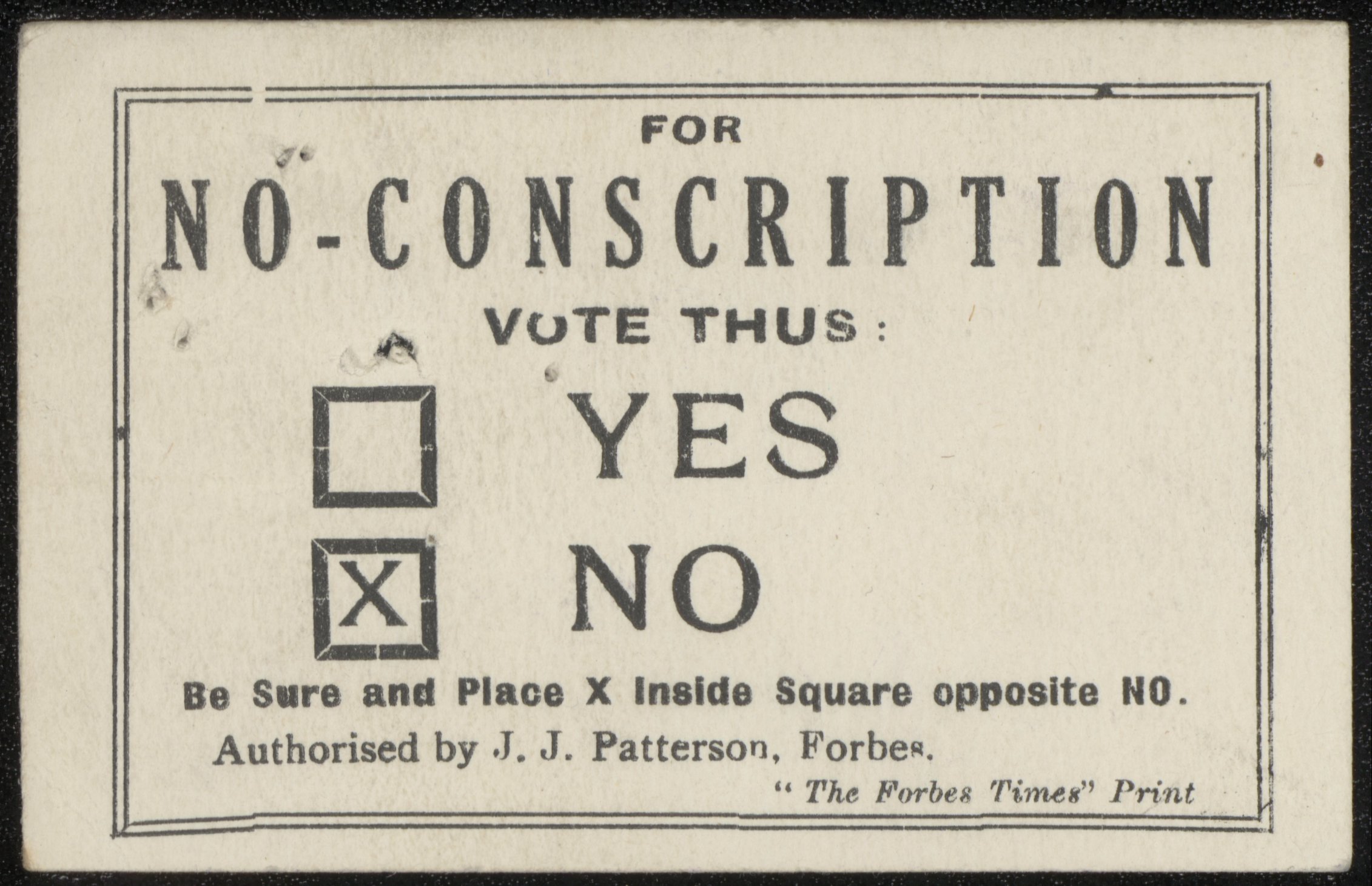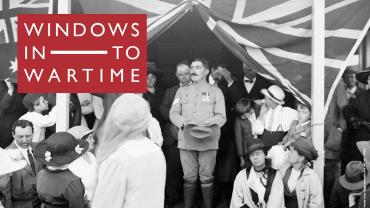Vote ‘Yes’ or ‘No’?
#OnThisDay 28 October 1916 Australians went to the polls to vote in a plebiscite on wartime conscription. The divisive debate fractured communities across the country. The ‘No’ vote won.
Conscription defeat had consequences for the Labor Party at the Federal and State levels with Prime Minister Billy Hughes and Premier William Holman leaving the Labor Party to form new coalitions and stay in power.
Source: Worker. (1918). October 28, 1916. No-conscription anniversary
Related
Extract from the NSW Anzac Centenary website: How the battle was waged - conscription propaganda »
On 28 October 1916 Australia cast its vote. Even the soldiers at the front were given the opportunity to make their voice heard in what was called the ‘Anzac vote’. (13) However the results were not as the Premier or the Prime Minister had hoped. In New South Wales, 474 544 people, or 57% of voters, were against conscription. Nationally, it was a 52% ‘no’ vote. (14)
Some towns and suburbs had a majority vote either way. For example, in Mosman the ‘yes’ vote was 81%, while in Broken Hill, 70% of constituents voted no. However places such as Bexley, Naremburn, Gosford and Nowra were literally split down the middle, with only a handful of votes the difference. (15)
The Australian Government did not give up on the idea of conscription after the first plebiscite, holding a second plebiscite on 20 December 1917. Despite more emotional pleas for conscription from key leaders in government [Fig. 14-15], the ‘no’ vote was even higher the second time around. (16) It was a clear message from the people of New South Wales and Australia...
...The conscription debate caused great division in the community both before and after the plebiscites. In the city there was more chance for breathing space between those with opposing views, but in small rural towns, where there was only one pub and one general store, locals had little choice but to rub shoulders with each other.
A referendum is a binding vote to alter the Australian Constitution. Any other issue outside of the Constitution that is put to the vote is referred to as a plebiscite and the result is non-binding to the government of the day. There have been three federal plebiscites: two for military service in 1916 and 1917 and the National Song Poll in 1977 to vote on the preferred song choice for the Australian National Anthem.



